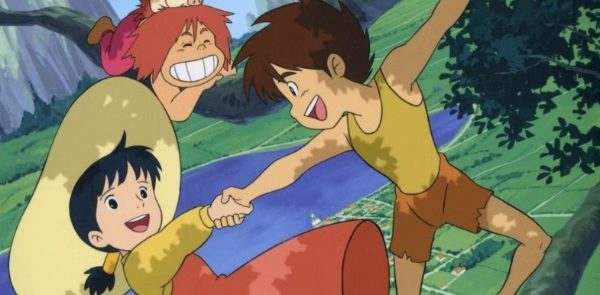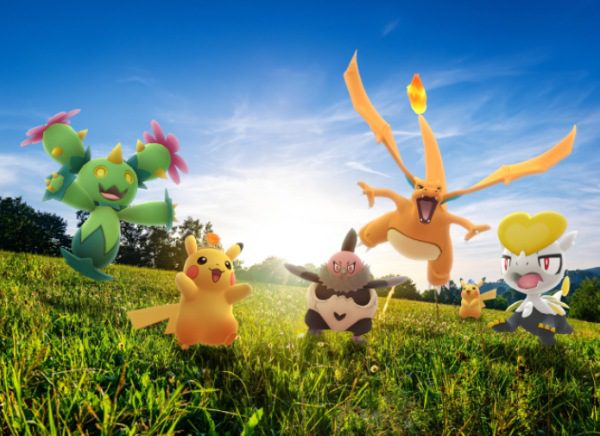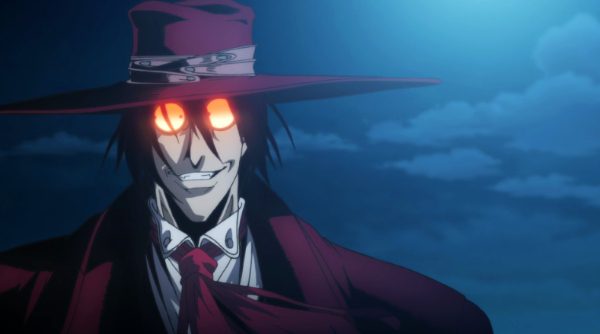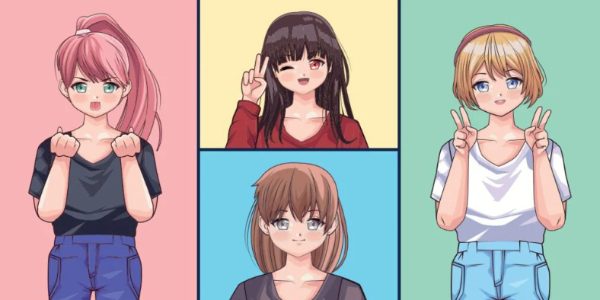Have you ever flipped on the TV to find your child glued to a show? It has bright colors, fantastical characters, and over-the-top action, and I started wondering, “Is anime for kids?“
While some anime series resemble Saturday morning cartoons, this vast form of Japanese animation caters to all ages and can vary wildly.
This article offers six essential tips from parenting experts. It guides you through the diverse anime landscape to help you navigate the exciting world of anime and find shows your child can enjoy safely.
What is anime?



Anime is a specific type of animation that is mostly hand-drawn and computer-generated specifically created in Japan.
For its unparalleled visual styles that go, anime has been a success everywhere in the world.
The storyline of anime is not only complex themes, but also character development. It is good for both children and also adults to perceive.
Literature and mythology, as well as traditional art including manga and J-pop music represent the internal culture of Japan and anime combines and presents all these things.
Whether in drawn or computer form, the tools for anime have evolved. However, the capability to latch the audience into the extraordinary stories of their imagination remains unsurpassed.
What age is anime intended for?
Anime has the potential to give its attention to fans of different age ranges. Determining the target audience becomes complicated as a result of this.
A certain anime series is aimed at children and called “kodomo anime.” The others address themes and complexities that are intended for adults.
The anime segment has a range that includes child-oriented stories, psychological plots, and sex-suggestive or violent ones.
For the sake of this, parents have to be careful and find out which anime contents are appropriate for their children.
What is anime for kids?



The expression “animes for kids” comprises animated series from Japan intended mainly for young audiences, ranging from preschoolers to pre-teens.
These anime series usually with exciting stories, visually appealing graphics, and relatable characters. The characters can magnetize children while carrying education or moral lessons at the same time.
Here are some examples of popular “animes for kids“:
- Pokémon. This ongoing anime series follows all the adventures of Ash Ketchup and his trusty friend Pikachu as they travel across different regions, capturing and battling various Pokémon creatures.
- Doraemon. This classic anime series centers around a cat-shaped robot from the future named Doraemon. Using futuristic gadgets, he helps his human friend, Nobita, with his daily life and learns important lessons.
- Yo-Kai Watch. This anime is based on a teenager named Nate who is really good at seeing Yo-Kai, which are supernatural entities that cause trouble.
- Sailor Moon. Initially created for a slightly older demographic, the magical girl anime called Sailor Moon found wide popularity among younger viewers because of themes like friendship, courage, and the power of self-determination.
- My Neighbor Totoro. A fabulous Studio Ghibli car by Hayao Miyazaki, In which the story of two sisters who meet the beautiful forest spirits and live in an incredibly wonderful world.
- Chibi Maruko-chan. In this slice-of-life anime, young Maruko represents her mischievous girlhood and depicts the highlights and lowlights of childhood through her laughable adventures.
What is anime not for kids?



Notwithstanding the fact that many anime series are suitable for children, many are not intended for children. Because it has adult content, themes, or complicated narratives.
It is crucial that parents and guardians are able to do research and, therefore, review the content of an anime series before letting the children watch it, as not all anime is meant for young viewers.
Here are some examples of anime.
Help them unplug and play with some friendly reminders
- Attack on Titan. This twisted and bloody anime is about people trying to defeat giant human-devouring titans. These scenes contain graphic violence, disturbing imagery, and mature themes.
- Neon Genesis Evangelion. A psychological and sophisticated anime that revisits topics of depression, existentialism, and religious imagery. It covers deep themes, which might not be fit for a younger audience.
- Hellsing Ultimate. An intense action-packed anime that follows the story of a vampire, her squad and their struggle against supernatural entities. It involves hordes of brutality, blood and mature scenes.
- Berserk. The anime takes place in a dark and brutal medieval fantasy world full of violence, blood, and terrible history that has no place in the world of children.
- Elfen Lied. This anime is centered around a little girl with superb psychic capability containing scenes of violence, inappropriacy and the evil of segregation and moral uncertainty.
- Paranoia Agent. A psychological anime drama which brings out the darker side of human nature, with mature themes, horrifying imagery, and complicated plots that may not be easy for young children to understand.
Benefits of watching anime for kids



Despite some parents’ concerns about anime’s appropriateness for their kids, many experts and educators acknowledge the value this captivating genre inherently offers to the young audience.
- Encourages imagination and creativity. Anime’s fantastic worlds, creative character designs, and imaginative storylines can trigger a kid’s creativity and imagination. Drawing, writing stories, or acting creatively can motivate kids by the anime they watch.
- Exposure to different cultures. Anime usually has Japanese cultural aspects, traditions, and values, and children can use the chance to understand and like different cultures and points of view.
- Promotes emotional intelligence. Some anime shows deal with complicated emotions, connections, and development that children can learn from.
- Creates interest in reading and storytelling. Most big anime series are adapted from original manga or light novels. Anime could be a door which will let kids discover the root of tale and they may get the interest in reading books.
- Teaches values and morals. Though not all anime are suitable for kids, there is a lot of child anime that inculcate bravery, team work and respect and do not discover violence while telling the story.
- Develop critical thinking skills. In some anime, there are complex plots, deep themes, or some moral issues that give a young mind something to analyze, contemplate and find a solution for.
What every parent should do: is anime for kids?
The answer to the question, is anime good for children should include a positive and informed parents campaign to monitor the level of child’s exposure to anime in an age-appropriate context.
Here are some crucial steps every parent should consider:
1. Gain knowledge about anime.
Anime is a multimedia, which has diversified to incorporate various genres, themes, and content.
Adults can be taught on different animation styles and genres to know what kind of a show is suitable for children.
2. Choose anime responsibly.
It’s very important for you to study and get anime shows that correspondingly fit your child’s age, hobbies, and maturity level.
Rate systems, parent advisories, and online reviews will help you decide what to give your kids access to.
3. Engage and communicate.
Instead of being passive audiences, parents should be proactive and talk with their children about the stories, characters, and morals that they get from anime.
4. Establish healthy boundaries.
As with all other media entertainment children get involved in, we should implement a time limit for such kids.
The long hours of sitting in front of the screen can cause serious health issues. Thus, parents should seek to establish a balance of time between entertainment and other activities.
A parental control app like the FlashGet Kids app can help establish time limits for your kids using its comprehensive screen time features.
5. Appreciate cultural nuances.
Most of the time, the anime represents Japanese culture that comprises of the Japanese norm of specific values, behaviors, and events that are quite different from other countries.
Teaching children to understand and appreciate cultural diversity. And providing some background information about the culture are some of the toughest tasks for the parents.
Conclusion
As the virtual universe that anime projects becomes more attractive than reality such for the youth, parents should take time to think through this complicated path with clearheadedness and some precaution.
Through acknowledging the different types of anime, choosing relevant resources, encouraging open conversations, and respecting cultures, parents can discover the enjoyment and insight that anime has to offer.
Lastly, Is anime for the kids? is a question that does not have one clear answer. Since for some anime, it does. And for some, it does not depend on a particular show or on the kid’s age.
Guided by the advice of parenting specialists and ensuring responsible use of media, families would begin a fulfilling adventure that leads to the world of anime.
FAQ
Is anime a good or bad thing?
Anime can be good or bad based on what is in the content. For teens and kids, age-appropriate anime can foster creativity and cultural awareness, though content with mature themes might be incompatible with young children.
Is it OK for 9-year-olds to watch anime?
It’s a matter of what anime series it is. Some are appropriate for 9-year-olds. But it is the responsibility of the parents to watch what their children are watching. It makes sure the content is age-appropriate and educational.
Are Japanese kids allowed to watch anime?
Yes, anime is a well-loved medium of entertainment by Japanese people. Now a lot of kids in that country watch anime shows, which are originally designed for young audiences.

